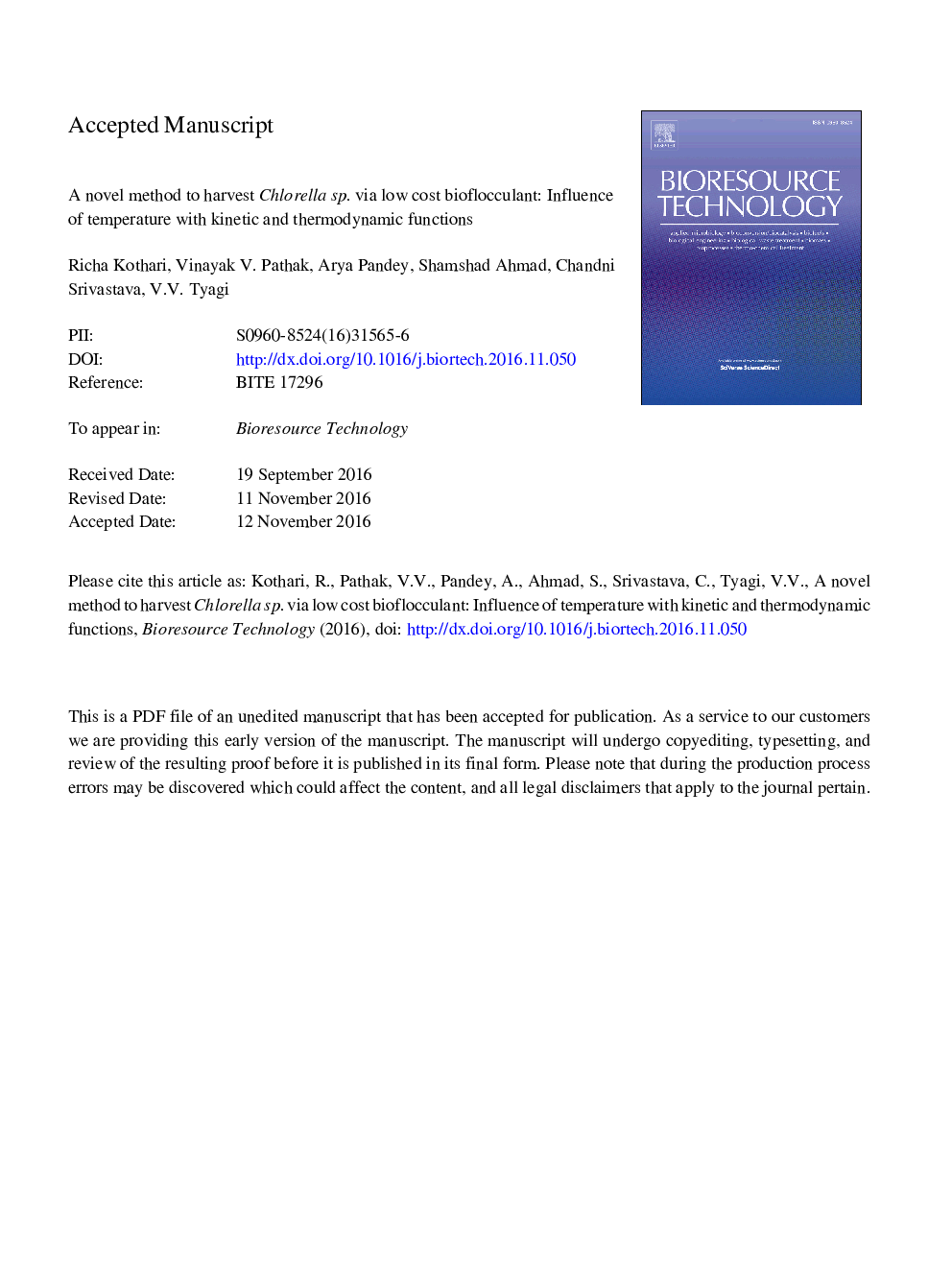| Article ID | Journal | Published Year | Pages | File Type |
|---|---|---|---|---|
| 4997939 | Bioresource Technology | 2017 | 21 Pages |
Abstract
In this study, harvesting efficiency (HE) of bioflocculant (egg shell) was observed with variation in flocculent concentrations (0-100 mg Lâ1), temperature (30 °C, 35 °C 40 °C, 45 °C and 50 °C) and variable contact time (0-50 min). It was found maximum (â95.6%) with 100 mg Lâ1 bioflocculant concentration whereas influence of temperature was also observed with optimized concentration of bioflocculant (100 mg Lâ1) at 40 °C (â98.1%) and 50 °C (â99.3%), in 30 min of contact time. Significant changes in algal cell structures were also analyzed after exposure to various temperatures with microscopy, SEM (Scanning electron microscopy) and EDS (Energy dispersive X-ray spectroscopy) images with and without bioflocculant. The experimental data was found to be a good fit with pseudo-second order kinetic model. The thermodynamic functions such as ÎG (Gibbs free energy), ÎH (enthalpy), ÎS (entropy) were also determined. The negative value of ÎG and positive value of ÎH and ÎS shows the spontaneous and endothermic nature of flocculation process.
Related Topics
Physical Sciences and Engineering
Chemical Engineering
Process Chemistry and Technology
Authors
Richa Kothari, Vinayak V. Pathak, Arya Pandey, Shamshad Ahmad, Chandni Srivastava, V.V. Tyagi,
